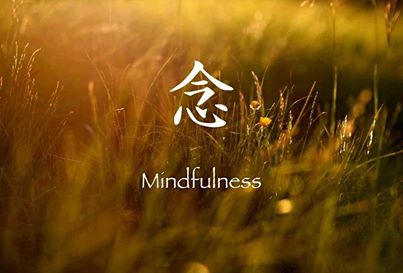
Mindfulness – The Chinese character 念 is composed of two parts, the top 今 meaning “now; this” and bottom 心 signifying “heart; mind.”
“Mindfulness is the quality and power of mind that is aware of what’s happening — without judgment and without interference. It is like a mirror that simply reflects whatever comes before it. It serves us in the humblest ways, keeping us connected to brushing our teeth or having a cup of tea. It keeps us connected to the people around us, so that we’re not simply rushing by them in the busyness of our lives.
We can start the practice of mindfulness meditation with the simple observation and feeling of each breath. Breathing in, we know we’re breathing in; breathing out, we know we’re breathing out. It’s very simple, although not easy. After just a few breaths, we hop on trains of association, getting lost in plans, memories, judgments and fantasies.
This habit of wandering mind is very strong, even though our reveries are often not pleasant and sometimes not even true. As Mark Twain so aptly put it, “Some of the worst things in my life never happened.” So we need to train our minds, coming back again and again to the breath, simply beginning again.
Slowly, though, our minds steady and we begin to experience some space of inner calm and peace. This environment of inner stillness makes possible a deeper investigation of our thoughts and emotions. What is a thought— that strange, ephemeral phenomenon that can so dominate our lives? When we look directly at a thought, we see that it is little more than nothing. Yet when it is unnoticed, it wields tremendous power.
Notice the difference between being lost in a thought and being mindful that we’re thinking. Becoming aware of the thought is like waking up from a dream or coming out of a movie theater after being absorbed in the story. Through mindfulness, we gradually awaken from the movies of our minds.”
~ Joseph Goldstein ~


